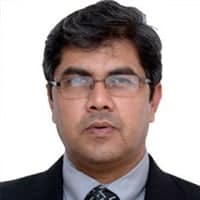
India saw more than 1400 deaths on June 20 (Just yesterday), a figure far higher than any we have seen during the worst days of the first phase. The number of new infections also is still above 55000 a day. The fact is that these numbers are much lower than the 4000 deaths a day and the 4 lakh infections a day figure seen during the peak of the second wave. That is why the premature celebrations everywhere, forgetting the fact that the numbers are still very high. On top of that is the impending third wave, which some say will come next month and others say will be seen in October.
The sudden emergence of the COVID-19 Pandemic led the world into frenzy. Schools and businesses were shut down, masks were made mandatory and social distancing measures were enforced. Despite all of these, millions of people lost their lives to the deadly virus, and many continue to do so even now. Nearly every country in the world was trying its best to come up with a permanent cure for this disease. Partial remedies such as lockdowns were impractical and had lethal economic costs. The joint efforts of all the countries started to pay off, as the possibility of the ‘cure’ was becoming increasingly apparent. This ‘cure’ was the arrival of the COVID-19 vaccines.
India was thoroughly devastated by COVID-19, both healthcare and economy-wise. The second wave itself caused the deaths of around 3 lakh people from all over the country. India’s GDP fell by 4%, leaving around 7 million people unemployed. The only possible way to recover from this catastrophe was by mass vaccination, and so, the Indian government started a mass vaccination campaign as early as March 2020, with the Indian Subject Expert Committee (SEC) under the Central Drugs Standard Control Organisation (CDSCO) ordering accelerated approval grants to the local vaccine producers, namely the Serum Institute of India and Bharat Biotech. Unfortunately, these efforts proved to be inadequate, as a shortage of vaccines and vaccine hesitancy among the populace left a great number of people un-vaccinated, paving the wave for the deadly second wave.
Many new vaccines are making their way into the Indian market. As of now, WHO has around 287 candidate vaccines waiting to be tried and tested. India currently has six WHO certified vaccines in circulation, with many more on the way. These vaccines are BNT162b2 by Pfizer, mRNA-1273 by Moderna, Ad26.COV2.S by Janssen (Johnson and Johnson), AZD1222 [COVISHIELD] by AstraZeneca, Vero SARS-CoV-2 by Sinopharm (Wuhan) and BBV152 [COVAXIN] by Bharat Biotech. With regards to efficacies, vaccines with the highest efficacies are 95% for BNT162b2 and 94% for mRNA-1273, made by Pfizer and Moderna, respectively. It must be said that there is some skepticism about these vaccines in the medical community as these type of RNA vaccines have not been traditionally used by the Medical community at large.
Nevertheless, these vaccines were tested in a double-blind, placebo-controlled study with a sample of 30,000 – 44,000 people, and so, we have little reason to doubt their efficacy. Ad26.COV2.S and AZD1222 [COVISHIELD] have decent efficacies of 66% and 70.4%, as found in their Phase III clinical trials. Lastly, the inactivated virus vaccines Vero SARS-CoV-2 has an efficacy rate of 72.5%, while BBV152 [COVAXIN] has only an efficacy rate of less than 50%. This has mainly to do with the lack of proper clinical trials by Bharat Biotech. Research does indicate that these vaccines have minor side effects such as headaches and fevers. Still, these are relatively small and are quickly taken care of by normal OTC (over-the-counter) medication.
The third wave in India will certainly be devastating as it will target those who are not vaccinated. Now, because of a very poor vaccination strategy we haven’t even vaccinated 5% of our population and looks like the number will only go up slowly in the next three months. India will have a large population of people at risk because they haven’t got the vaccine. Even in the second phase, as the virus spread to rural India, the number of people who fell ill or died went up dramatically largely because we do not have a functioning health system in rural India. When the third wave hits, the death rates will be higher in areas that are poorly equipped with hospital beds and testing facilities. That is why the importance of getting vaccinated needs to be highlighted and underlined.
There are unfortunately still a number of people who are hesitant in taking vaccines. They need to know that their hesitancy in not only making them vulnerable but will also make people around them prone to getting the infection. We need to keep organising vaccine camps, getting people out of their homes and educating them on the benefits of getting the vaccine. The government must ensure that all areas have access to free vaccines and that there is a constant messaging from the very top about the need for mass and universal vaccination. If we do not do so, we should be ready for an even more devastating third phase very soon.
Amir Ullah Khan and Ismail Shaikh are researchers at the Centre for Development Policy and Practice, Hyderabad

